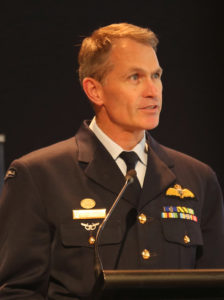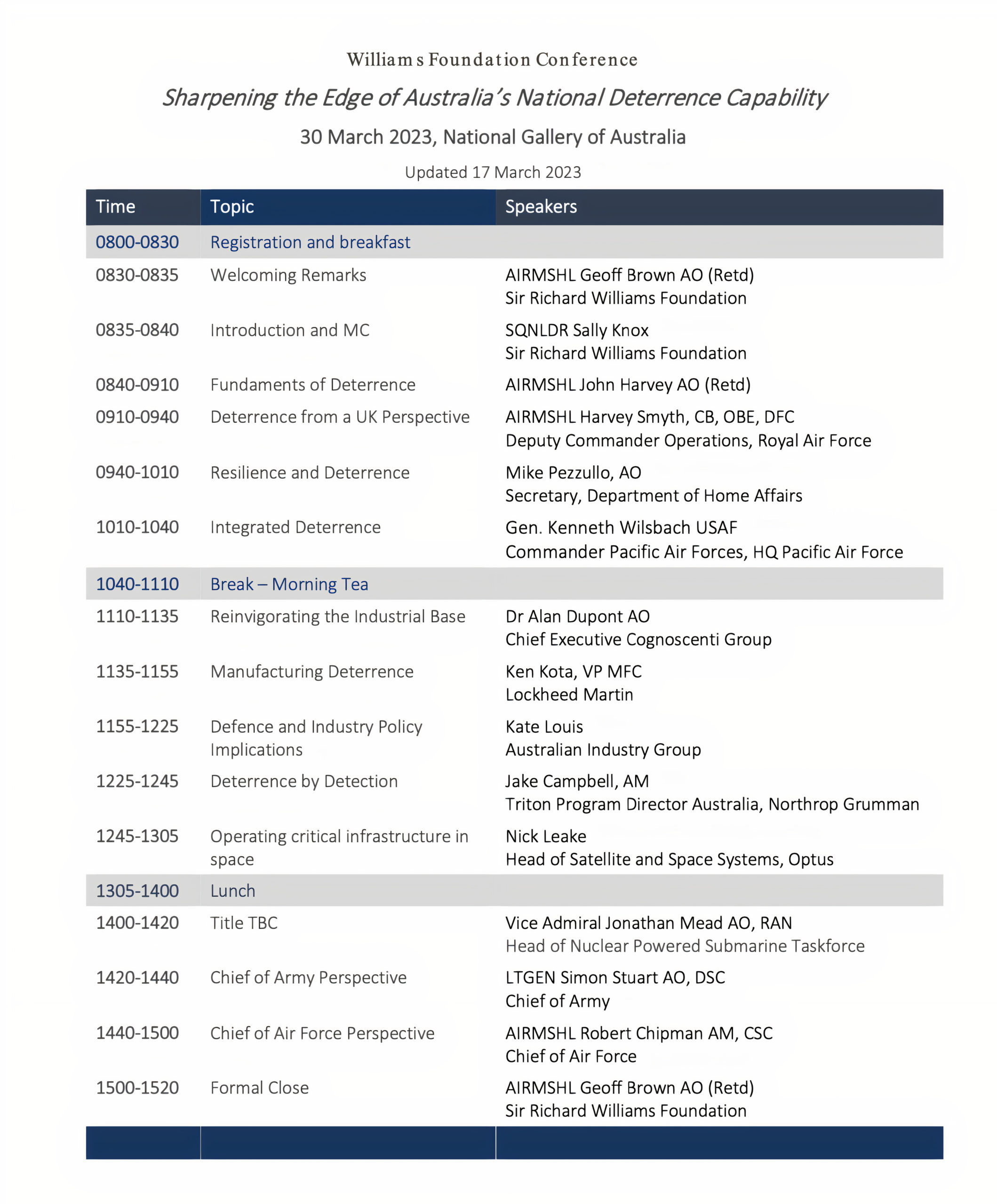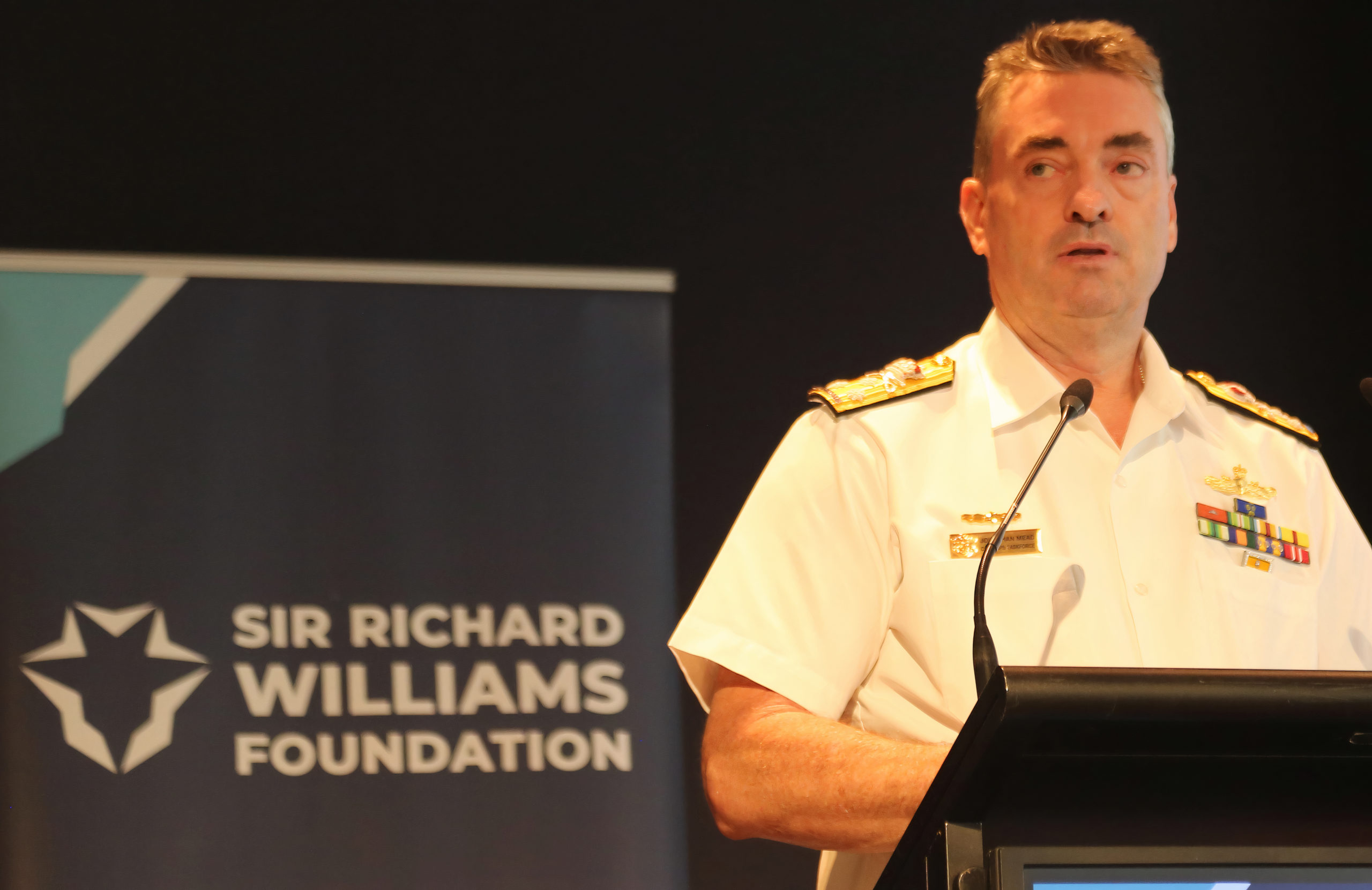By Robbin Laird
The latest Williams Foundation Seminar was held on March 30, 2023 in Canberra.
It was entitled “Sharpening the Edge of Australia’s National Deterrence Capability” and focused on the strategic transition of Australia and the ADF in meeting the challenges of the decade ahead.
I asked one of the young officers who attended the seminar what they got out of the seminar: “We are facing a significant strategic shift and those of us just now in service need to understand what the focus of the defense of our country is and will need to be as we work to defend our country.”
Another young officer said: “The last generation fought abroad; now we are defending our country and in our region. How are we going to do so effectively?”
That rathe put it succinctly what the distinguished group of speakers was needed focused on doing.
The seminar itself was placed midway between two major government announcements about the changing approach to defense. The first was the announcement with regard to the way ahead with the generation of a new nuclear submarine capability for Australia and the second is the forthcoming release of the Defence Strategic Review, expected in late April.
For me, this session reminded me of my first engagement with the Williams Foundation in 2014 which led to my first seminar report. “On Tuesday, 11 March 2014, the Sir Richard Williams Foundation conducted its biannual seminar on ‘Air Combat Operations, 2025 and Beyond.’ The seminar explored the challenges and opportunities afforded by the introduction of fifth-generation air combat capabilities.”
Well, we have almost reached 2025, and the focus of the 2014 seminar was indeed on introducing the F-35 into the ADF and the transformation which could be created to evolve the capabilities of the ADF as an integrated force able to operate across the spectrum of warfare.
For the next decade, the seminars held by the Foundation provided detailed looks at that transformation through the presentations of senior ADF leaders and analysts about the evolving strategic environment and the evolving ADF capabilities and concepts of operations.
I have detailed that decade in my book, Joint By Design: The Evolution of Australian Defence Strategy which was published in late 2020.
As Vice Admiral (Retired) Barrett noted in his wrap up comments at the end of the seminar on March 30th: “As the Chairman of Williams, Geoff Brown, indicated at the beginning of the day we are taking a different take with this seminar and the one to follow later in the year. The subject that we discussed over the last couple of hours has been around deterrence where previously at these conferences, we’ve been talking very specifically around fifth generation capability throughout the ADF.
“So the idea that we would gather, and we would have an array of esteemed speakers who would inform us, educate us, but also challenge us, but assist us in being able to formulate what our thinking about the way ahead made a great deal of sense.”

What Barrett said was very much in line with what the younger generation of officers wanted to discuss and learn about.
But I must add that I have been working defense issues for a long time, in Europe and in the United States as well as in the Pacific.
And for one who worked through the 1980s on the Euro-missile crisis, the Soviet confrontation with a Europe in transformation and certainly about nuclear weapons, the discussion of deterrence at the seminar took me back to work with Herman Kahn and Zbig Brzezinski which I did in the past.
What is deterrence in this period of the 21st century?
And what can we learn from a past which has been forgotten as we fought the land wars?
The forthcoming report on the seminar will highlight the presentations at the seminar and the insights from additional interviews with senior ADF personnel and analysts.
But I can note that the seminar took a broad view of the challenge of deterrence, that deterrent effects are not simply a result of the ADF can do with its allies and partners but what the Australian polity, economy, culture and society can deliver in competing with the 21st century authoritarian powers and cooperate with allies going through a very fluid situation in their domestic polities, societies, cultures and economies.
The concluding presentation of the seminar by the head of the RAAF, Air Marshal Chipman, provided a comprehensive look at deterrence from the standpoint of a middle power, and drew together a number of the insights of other speakers as well.

“I mentioned earlier that deterrence works on the threat of escalation.
“But we must be clear, as a Middle Power, this must stop short of actually provoking conflict.
“Deterrence fails at the point conflict begins.
“Strategic competition is dynamic and unstable: peripheral interests might become core over time.
“For a deterrence strategy to succeed through a prolonged period of strategic competition, we must also build pathways for de-escalation.
“This is as important in force design and force posture as it is to campaign design.
“The capabilities we invest in, where we stage them and how we intend to use them.
“De-escalation pathways restore the pre-crisis or pre-conflict balance of power. Seizing a diplomatic off-ramp too early may cede advantage; too late will cause unnecessary attrition.
“Our successful deterrence strategy will need to consider escalation and de-escalation in equal measure.”
Building capabilities to do so, having a society resilient enough to deal with a wide-range of threats, to have allied cohesion significant to be credible, and learn how to combine military capabilities with the art of statecraft which understands the minds of our authoritarian competitors is a work in progress.
And in future seminars we will see the learning process playing out.
The featured photo: Vice Admiral Jonathan Mead addressing the Williams seminar, March 30, 2022. VADM Mead is the Chief Nuclear Powered Submarine Task Force. At the seminar, he provided a succinct and powerful overview on the way ahead for the program. It is the analogy to the F-35 program which the 2014 seminar of Williams highlighted as an anchor program for ADF development.
The seminar program:



